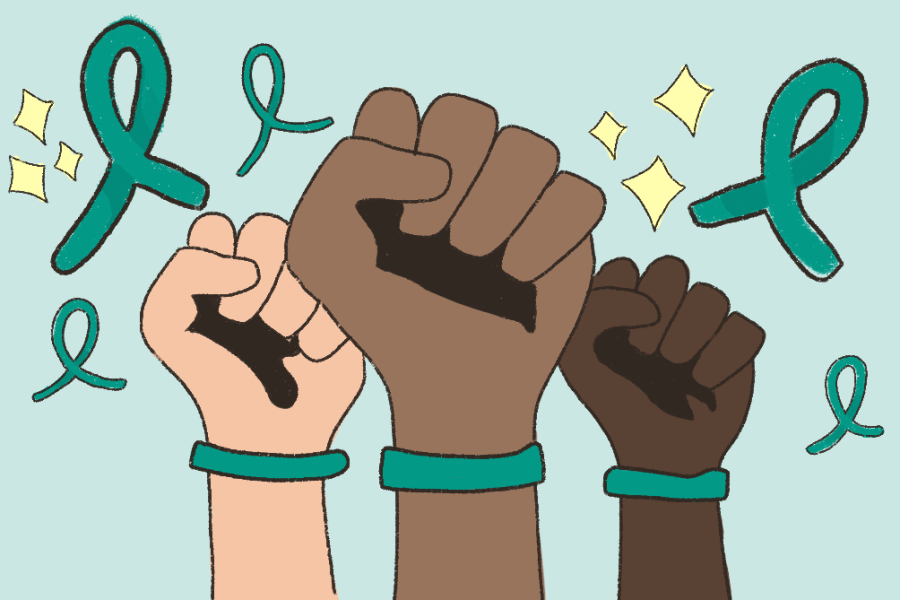Sexual Assault Awareness Month
April is Sexual Assault Awareness Month (SAAM). SAAM is an annual campaign to raise public awareness about sexual assault and educate communities and individuals on how to prevent sexual violence. Each year during the month of April, state, territory, tribal and community-based organizations, rape crisis centers, government agencies, businesses, campuses, and individuals plan events and activities to highlight sexual violence as a public health, human rights and social justice issue and reinforce the need for prevention efforts.
What is sexual assault? Sexual assault is an act in which one intentionally sexually touches another person without that person’s consent or coerces or physically forces a person to engage in a sexual act against their will. Sexual assault can take many different forms a strong misconception is that sexual assault is only rape. However, sexual assault falls under many categories of unwanted sexual actions. However, one thing remains the same: it’s never the victim’s fault.
History: You may think sexual assault awareness has been around for a long time, since the issue is nothing new. However, groups to prevent assault did not become mainstream until very recently.
1970’s: The 70’s saw a significant growth for prevention and awareness of sexual violence across the United States, following the general trend of social activism throughout the decade including women’s rights, gay rights, and environmental rights. Moving beyond awareness of the issue, the Bay Area Women Against Rape group opened in 1971 as the nation’s first rape crisis center offering immediate help for victims. With this heightened awareness of sexual violence, state coalitions began to form, beginning with Pennsylvania Coalition Against Rape in 1975. As early as 1976, “Take Back the Night” marches rallied women in organized protest against rape and sexual assault. They protested the violence and fear that many women experience walking the streets alone at night. Over time, these events coordinated into a movement across the United States and Europe. Because of this movement broader activities to raise awareness of violence against women began to occur.
1980’s: In the early 80’s, activists used October to raise awareness of violence against women and domestic violence awareness. In the late 80s, the National Coalition Against Sexual Assault (NCASA) informally polled state sexual assault coalitions to determine the preferred date for a national Sexual Assault Awareness Week. A week in April was selected.
1990’s: By the late 90’s, many advocates began coordinating activities and events throughout the month of April, advancing the idea of a nationally recognized month for sexual violence awareness and prevention activities. Survivors, advocates, and state coalitions mobilized around the creation and implementation of the Violence Against Women Act in 1994 (VAWA). This bill was the first national law requiring law enforcement to treat gender violence as a crime rather than a private family matter. VAWA was also designed to strengthen legal protections for victims of domestic violence and sexual violence as well as expand services to survivors and their children.
2000’s: The National Sexual Violence Resource Center was established in 2000 by the Pennsylvania Coalition Against Rape and the Center for Disease Control. In 2001, the NSVRC coordinated the first formally recognized national Sexual Assault Awareness Month campaign, and still facilitates it today. In 2005, the campaign shifted to prevention of sexual violence and the first tool kits were sent out to coalitions and rape crisis centers across the country. Awareness for the campaign culminated in 2009 when Barack Obama was the first president to officially proclaim April as Sexual Assault Awareness Month.
Statistics (found on https://www.nsvrc.org/statistics )
- One in five women in the United States experienced completed or attempted rape during their lifetime.
- Nearly a quarter (24.8%) of men in the U.S. experienced some form of contact sexual violence in their lifetime.
- One in three female victims of completed or attempted rape experienced it for the first time between the ages of 11 and 17.
- About one in four male victims of completed or attempted rape first experienced it between the ages of 11 and 17.
- The prevalence of false reporting for sexual assault crimes is low — between two percent and 10 percent.
- Over half (52.4%) of male victims report being raped by an acquaintance and 15.1% by a stranger.
What role does social media play? With social media being such a prevalent part of day to day life now, especially for teens, social media might be playing a big part in perpetrating sexual offenses. Sexual abuse on social media platforms takes on various forms, including but limited to:
- Threatening to distribute or distributing intimate or sexual images of a victim without their consent
- Sending unsolicited nude images
- Pressuring a victim to send sexually explicit images, emails, chats, or texts
- Taking sexually explicit content of the victim without their consent
A survey by Nancy Jo Sales for her book American Girls: Social Media and the Secret Lives of Teenagers showed most teenage girls receive unrequested nude or semi-nude pictures.
Social media plays a significant role in rape culture as well. Rape culture is defined as the perpetuation of a belief that the victims of sexual abuse contributed to their victimizations and are thus responsible for the abuse. This falsified belief justifies sexual aggression and trivializes the severity of the assault. Reinforcing rape culture on social media has disturbing effects and may be a reason for a lack of reporting crimes. Only one in every three of all rape cases gets reported. Of these, fewer than 40% appear before a judge or jury. Teenagers may have a harder time reporting online sexual assault, fearing verbal repercussions from strangers.
Another article on Dakota Planet written by Jade Lilly informs readers about an uncomfortable trend in terms of sexual assault and ways to defend yourself. Here is the link: https://thedakotaplanet.com/20755/features/april-24th-the-new-disturbing-tiktok-trend/
However, social media is also helping spread awareness for sexual violence, most widely recognized with the #MeToo movement. Platforms including Twitter and TikTok can be a great way to share your story and stand in solidarity with other victims who may be too afraid to speak up.
It is very important to educate yourself and others. Reach out if you or someone you know may be a victim of sexual assault or harassment. There is no right or wrong way to feel if you have been assaulted and there are many resources you can reach out to for help.
Sources:
https://www.nsvrc.org/statistics
https://www.acf.hhs.gov/ofvps/sexual-assault-awareness-month#:~:text=Share%20the%20National%20Sexual%20Violence,to%20change%20ourselves%20and%20the https://en.wikipedia.org/wiki/Sexual_Assault_Awareness_Month#:~:text=In%202005%2C%20the%20campaign%20shifted,as%20Sexual%20Assault%20Awareness%20Month
Your donation will support the student journalists of Dakota High School. Your contribution will allow us to purchase equipment and cover our annual website hosting costs.

Ellie Snodgrass is a senior and this is her first year working for the Dakota Planet. She loves reading and writing and is very excited to share stories...

